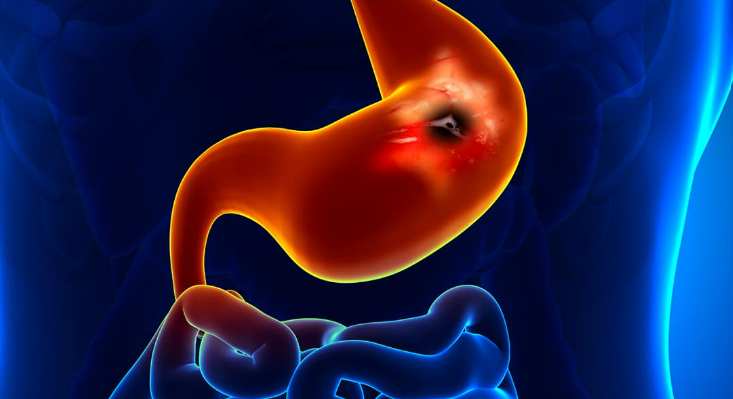Understanding Stomach Ulcer Health: Causes, Symptoms, and Management
Stomach ulcers, also known as peptic ulcers, are painful sores that develop on the lining of the stomach, small intestine, or esophagus. They occur when the protective mucus layer that shields the stomach lining from digestive acids becomes weakened, allowing acid to damage the tissues underneath. This article explores the causes, symptoms, diagnosis, treatment, and preventive measures related to stomach ulcers.
Causes of Stomach Ulcers
Stomach ulcers can arise from several factors, often involving a combination of lifestyle, bacterial infections, and medication use:
- Helicobacter pylori (H. pylori) Infection: One of the most common causes of stomach ulcers is an infection with Helicobacter pylori, a type of bacteria that disrupts the mucous layer protecting the stomach lining. This bacterium is found in the stomach of a significant portion of the global population, but not everyone infected will develop ulcers.
- Nonsteroidal Anti-Inflammatory Drugs (NSAIDs): Frequent use of NSAIDs such as aspirin, ibuprofen, and naproxen can irritate the stomach lining and lead to ulcer formation. These medications inhibit the production of prostaglandins, which help maintain the protective mucus layer of the stomach.
- Excessive Alcohol Consumption: Alcohol can erode the stomach lining and increase acid production, both of which can contribute to the development of ulcers.
- Smoking: Smoking not only increases stomach acid production but also decreases the production of bicarbonate, a substance that helps neutralize stomach acid. Both of these effects contribute to ulcer formation and delay healing.
- Stress: While stress alone is not a direct cause of ulcers, it can exacerbate symptoms and contribute to ulcer development by increasing stomach acid production and affecting the immune response.
Symptoms of Stomach Ulcers
Stomach ulcers can present with a range of symptoms, which may vary in severity:
- Abdominal Pain: The most common symptom is a burning or gnawing pain in the upper abdomen, which may improve or worsen with eating.
- Nausea and Vomiting: Some individuals may experience nausea or vomiting, which can sometimes be accompanied by blood or a dark, coffee-ground appearance due to bleeding.
- Indigestion and Heartburn: Ulcers can cause persistent indigestion or heartburn, leading to discomfort after eating.
- Loss of Appetite and Weight Loss: Pain and discomfort may lead to a reduced appetite and unintentional weight loss.
- Bloody or Dark Stools: If an ulcer bleeds, it can result in black or tarry stools, indicating the presence of digested blood.
Diagnosis of Stomach Ulcers
Diagnosing a stomach ulcer typically involves several steps:
- Medical History and Physical Examination: A healthcare provider will review the patient’s symptoms, medical history, and lifestyle factors to determine the likelihood of an ulcer.
- Endoscopy: An upper endoscopy is a procedure where a flexible tube with a camera (endoscope) is inserted through the mouth to examine the lining of the stomach and small intestine. This allows for direct visualization of the ulcer and tissue biopsies if needed.
- Helicobacter pylori Testing: Tests to detect H. pylori infection may include blood tests, stool tests, or breath tests.
- Imaging Studies: In some cases, imaging studies such as X-rays with barium contrast may be used to assess the presence of ulcers.
Treatment and Management
The treatment of stomach ulcers focuses on reducing stomach acid, eradicating H. pylori infection if present, and promoting healing of the ulcer:
- Medications:
- Proton Pump Inhibitors (PPIs): These drugs reduce stomach acid production and help heal the ulcer. Common PPIs include omeprazole, esomeprazole, and lansoprazole.
- H2-Receptor Antagonists: These medications, such as ranitidine and famotidine, also decrease acid production but are typically used less frequently than PPIs.
- Antibiotics: If H. pylori is detected, a course of antibiotics such as amoxicillin or clarithromycin may be prescribed along with acid-reducing medications.
- Antacids and Acid Reducers: These can provide symptomatic relief by neutralizing stomach acid.
- Lifestyle Modifications:
- Avoiding NSAIDs: If possible, substitute NSAIDs with other pain management options.
- Limiting Alcohol and Smoking: Reducing or eliminating these habits can significantly improve ulcer symptoms and promote healing.
- Dietary Adjustments: Eating smaller, more frequent meals and avoiding spicy, acidic, or irritating foods can help manage symptoms.
- Surgery: In rare cases where ulcers do not respond to medication or if complications arise, surgical intervention may be necessary to remove the ulcer or repair damage.
Preventive Measures
To prevent the recurrence of stomach ulcers, consider the following strategies:
- Use Medications Wisely: Limit the use of NSAIDs and follow medical advice on appropriate medications.
- Manage Stress: Employ stress-reducing techniques such as mindfulness, exercise, and relaxation strategies.
- Maintain a Healthy Lifestyle: Avoid smoking and excessive alcohol consumption, and eat a balanced diet.
- Regular Medical Check-ups: If you have a history of ulcers or are at risk, regular check-ups can help monitor and manage your condition effectively.
Conclusion
Stomach ulcers are a common yet manageable condition that can significantly impact quality of life. Understanding their causes, recognizing symptoms, and following appropriate treatment and preventive measures are essential for maintaining stomach health. By adopting a proactive approach and working closely with healthcare providers, individuals can effectively manage and prevent ulcers, leading to improved overall well-being.


